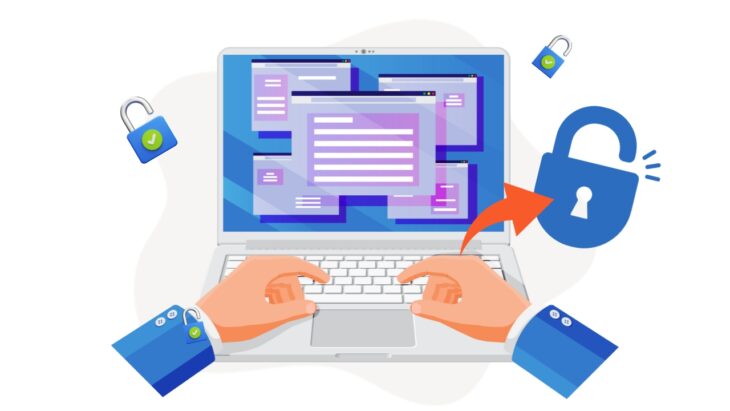One minute you’re typing away, and the next, your keyboard decides to take an unscheduled break. We’ve all been there, right?
Without your keyboard, you lose the bridge between your thoughts and the digital world. Without it, everyday menial tasks become nearly impossible.
Fun Fact: Did you know the QWERTY keyboard layout was designed in the 1870s? It’s been with us for a long time, and we’ve become quite attached!
Table of Contents
ToggleCommon Reasons for a Locked Keyboard
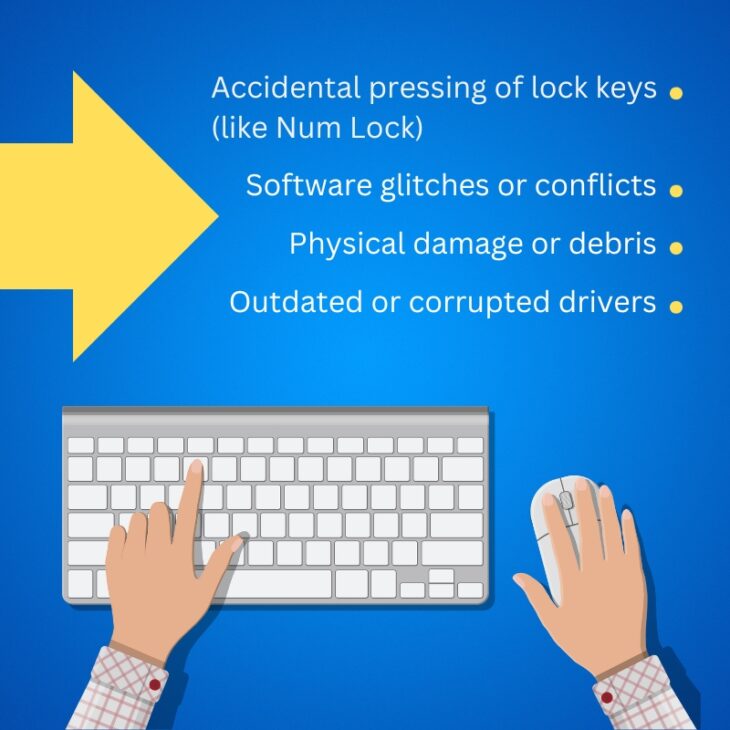
Keyboards, like all tech, can be a bit temperamental. Some common culprits include:
- Accidental pressing of lock keys (like Num Lock).
- Software glitches or conflicts.
- Physical damage or debris, which can sometimes lead to keys becoming jammed.
- Outdated or corrupted drivers.
But fear not! I’m here to guide you through the process of unlocking your Dell laptop keyboard. Whether it’s a sneaky software issue or a physical lock, we’ll tackle the problem together.
Assessing the Situation
Before we jump into solutions, it’s essential to understand the root of the problem. Is it a software hiccup or something physical? Let’s find out.
Identifying Issues
- Physical Locks: Some laptops come with physical switches or key combinations that can lock the keyboard. It’s easy to accidentally trigger these, especially if you’re in a hurry or not familiar with your laptop’s layout.
- Software Locks: Software issues can be a bit trickier. Maybe a recent update didn’t sit well with your system, or perhaps there’s a conflict with another program. We’ll get to the bottom of it.
Pro Tip: Always keep your software updated. It not only helps with performance but can also prevent issues like these.
Isolating the Problem
- External Keyboard Test: A quick way to check if it’s a software issue is by connecting an external keyboard. If the external one works, it’s likely a problem with your laptop’s built-in keyboard.
- Rebooting the Laptop: The age-old advice of “turn it off and on again” still holds. Sometimes, a simple reboot can clear out any minor glitches causing the lock.
Hardware Fixes
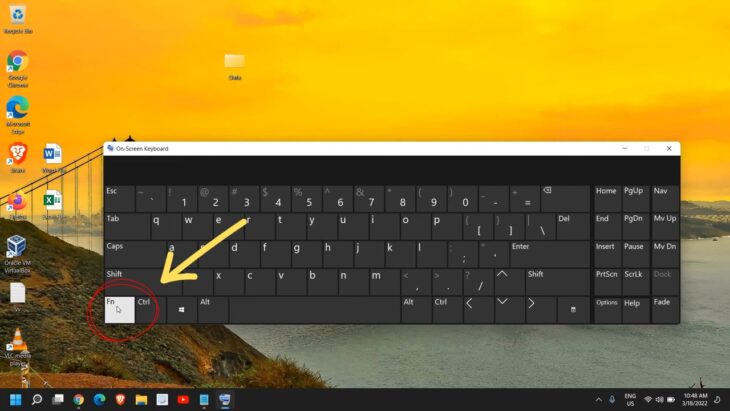
Exploring the Function Key Combinations
- Fn + F4/F7/F8 (and more): Dell laptops often have function key combinations that can enable or disable certain features, including the keyboard. Try pressing the ‘Fn’ key along with one of the function keys (like F4, F7, or F8) to see if that unlocks it.
- Num Lock Key: The Num Lock key can sometimes cause parts of your keyboard to act up. If you notice only a section of your keyboard isn’t responding, try toggling the Num Lock key.
Using the Dell Laptop Shortcut
Some Dell laptops have a shortcut to enable or disable the keyboard. It’s worth checking your laptop’s manual or doing a quick online search specific to your model.
Checking for Physical Lock Switches
- Locating the Switch: While rare, some models might have a physical switch to lock the keyboard. Check the sides and bottom of your laptop.
- Toggling the Switch: If you find a switch, toggle it to see if it unlocks the keyboard.
Fun Fact: Physical lock switches were more common in older laptop models. They were a handy feature for preventing accidental key presses during presentations or while using external peripherals.
Software Fixes
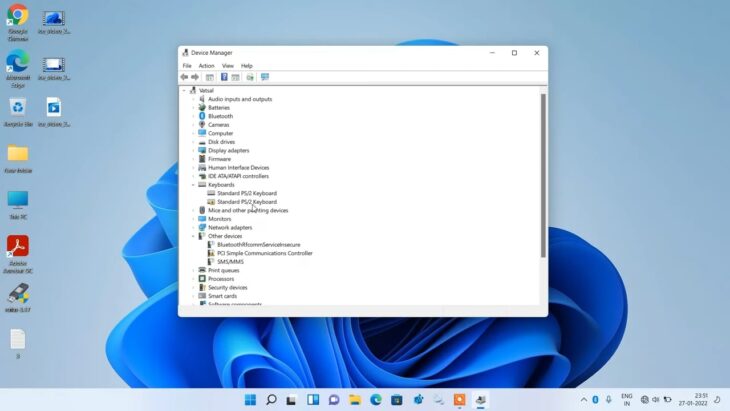
Alright, if you’ve made it this far, it’s likely that those pesky physical locks weren’t the culprits. No worries! Let’s see if we can find the key (pun intended) to unlocking your keyboard.
Accessing the Device Manager
The Device Manager is like the backstage of your computer’s performance. It’s where you can see all the devices connected to your computer and manage their drivers.
- Press Windows + X and select ‘Device Manager’ from the menu.
- Look for the ‘Keyboards’ section and expand it.
Uninstalling/Updating Drivers
Sometimes, drivers can become outdated or corrupted, causing the keyboard to lock.
- Right-click on ‘Standard PS/2 Keyboard’ or any similar listing under ‘Keyboards’.
- Choose ‘Update driver’ and follow the prompts. If that doesn’t work, you can try the ‘Uninstall device’ option. Don’t worry; once you restart your laptop, Windows will reinstall the necessary drivers.
Pro Tip: Always back up your data before making significant changes to your system, like uninstalling drivers.
Enabling the Device
There’s a chance your keyboard might be disabled in the Device Manager.
If you see a downward arrow next to your keyboard listing, right-click and select ‘Enable device’.
Advanced Troubleshooting
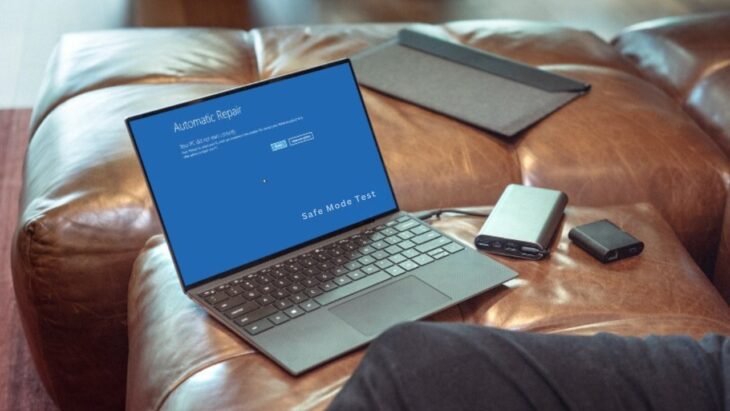
If you’re still with me and that keyboard remains as stubborn as a mule, it’s time to pull out the big guns.
Safe Mode Test
Booting in Safe Mode will load only essential drivers, which can help identify if a third-party software is causing the issue.
- Restart your laptop and press F8 repeatedly before the Windows logo appears.
- Choose ‘Safe Mode’ and check if your keyboard works.
System Restore as a Last Resort
System Restore can take your computer back to a time when everything was working fine.
- Type ‘System Restore’ in the Windows search bar and follow the prompts.
- Choose a restore point from when your keyboard was functioning.
Contacting Dell Support
If all else fails, it might be time to call in the experts. Dell’s support team is knowledgeable and can guide you through more specific troubleshooting steps for your model.
Fun Fact: Dell was founded in a dorm room by Michael Dell in 1984. Talk about humble beginnings!
Preventing Future Locks
Now that we’ve (hopefully) unlocked your keyboard, let’s make sure it stays that way!
Installing Driver Update Software
Keeping your drivers updated can prevent many issues. Consider using software that automatically checks for and installs driver updates.
Keeping the Laptop Clean
Dust and debris can interfere with functionality. Regularly clean your keyboard with compressed air to keep it in tip-top shape.
Avoiding Spills and Physical Damage
It might sound obvious, but accidents happen! Always keep liquids away from your laptop and consider using a keyboard protector.
Pro Tip: If you do spill something on your keyboard, turn off your laptop immediately, unplug it, and let it dry upside down for at least 24 hours.
FAQ
What if my Dell laptop keyboard is still locked after trying all the mentioned steps?
If you’ve exhausted all the steps and your keyboard remains unresponsive, it could be a hardware issue. In such cases, the internal components might be damaged or malfunctioning. It’s best to consult with a professional technician or consider replacing\.
Are there any third-party software tools that can help diagnose keyboard issues?
Yes, there are diagnostic tools available online that can help identify issues. Software like “Keyboard Test Utility” can help you check if all the keys are functioning correctly. However, always ensure you download software from reputable sources to avoid malware.
Can external factors like temperature or humidity affect my keyboard’s functionality?
Absolutely. Extreme temperatures, especially heat, can affect the internal components of your laptop. High humidity can introduce moisture, which is a known enemy of electronics. It’s always best to use and store your laptop in a cool, dry environment.
How often should I update my drivers to prevent such issues?
It’s a good practice to check for driver updates at least once a month. However, if you use driver update software, it can automatically notify you when updates are available, making the process more seamless.
Conclusion
Navigating through tech troubles can sometimes feel like a maze, but with the right guidance, every problem has a solution. Whether it’s a mischievous software glitch or a physical hiccup, understanding the root cause is half the battle.
Armed with this knowledge, you’re now well-equipped to tackle any keyboard conundrums that come your way. Remember, the digital world is at your fingertips, quite literally, so keep those keys tapping and your tech spirit high!
